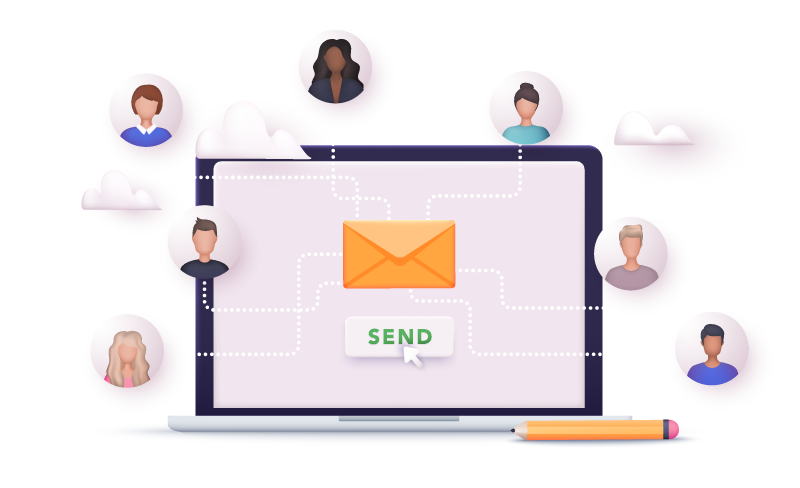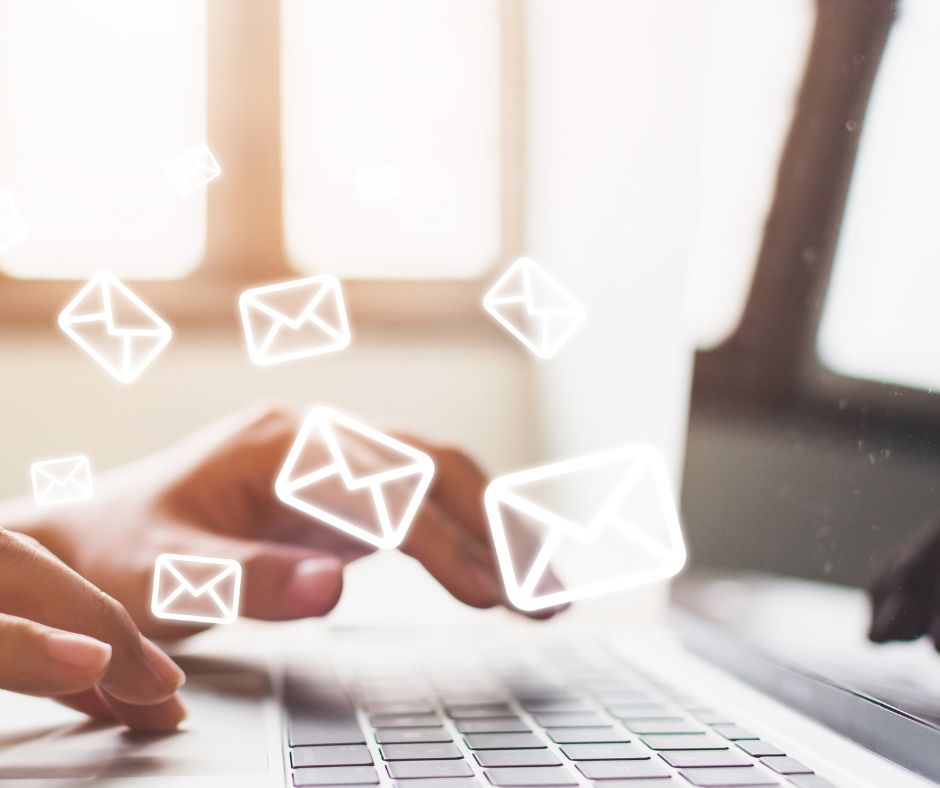Is e-mail an outdated tool? With an image tarnished by mass emailing and the development of new communication channels, such as social networks, some might think that e-mail marketing is out of date. However, with an average of 32 euros obtained for every euro spent, it is one of the channels with the best ROI. Given that 99% of email users check their inbox every day, it’s easy to see why this channel should not be overlooked! E-mail marketing is the solution par excellence for maintaining a dialogue with your contacts, whether for customer nurturing or lead nurturing.
But these days, to achieve results and a good open rate, simply sending e-mails to your entire database is no longer enough. You need to put in place a real strategy to support each customer or prospect at every stage of their journey towards conversion, with the right message delivered at the right time. The key words here are segmentation, personalisation and automation.
Here are 5 key principles to help you put in place an effective email marketing strategy.
1 – Building a relationship of trust
Establishing a relationship of trust with your contacts is essential. Before sending an e-mail, you must not only obtain the explicit consent (mandatory since the RGPD) of your visitors, but it is also important to clearly indicate the type of content and frequency of the e-mails they are about to receive. This will ensure that you have contacts who are interested in your content. This will boost your open rate and will undoubtedly be reflected in the number of conversions.
To go even further, “double opt-in”, i.e. sending an e-mail confirming registration, is a good way of ensuring that a new subscriber is genuinely interested and, at the same time, verifying the validity of the e-mail address provided. You should also give your visitors the option of selecting the type(s) of e-mail they wish to receive and how often, as part of a newsletter for example. In this way, you can build up a relationship of trust and then send even more relevant and personalised content.

2 – An organised, up-to-date and relevant database
Before thinking about segmenting your contacts, the first step is to build and maintain an organised, up-to-date and relevant database.
Getting relevant contacts starts with data collection. Not only do you need to ensure that you have contacts who are interested in your content, but you also need to remember to collect the right data. In addition to the basic information (surname, first name and e-mail address), think about the data you really need. Always bear in mind that data quality and relevance are more important than quantity.
Keeping your database up to date by regularly adding new e-mail addresses and deleting non-existent and inactive ones is also important. This will enable you to increase your emailing deliverability, i.e. the ability of an email to reach its recipient’s inbox.

3 – Time for segmentation
Once your database is organised and up to date, it’s time to ensure that each user receives messages that are relevant to their profile and their progress through the Buyer Journey or Customer Journey. This is precisely where segmentation comes in.
Segmentation, which depends on the data collected on users, can be carried out on the basis of a number of criteria:
- geographical,
- socio-demographic (gender, age, profession, etc.),
- behavioural (pages consulted, frequency of visit, product categories consulted, etc.),
- psychological (values, interests, etc.).
Depending on the purpose of your e-mails, you can target the different groups created and offer a personalised experience to your contacts.
Today, personalisation is the key to achieving your e-mail marketing objectives. To go even further, we must not limit ourselves to more or less stable attributes, but open the door to dynamic segmentation. By using Marketing Automation software, you can automatically update your contact lists according to their actions (opening an e-mail, behaviour on your site, etc.), their attributes or their score (lead scoring).
Lead scoring, which involves assigning a score to each of your contacts, is an interesting segmentation tool for lead nurturing. This score reflects each contact’s level of interest and conversion potential. It enables you to send personalised, relevant e-mails based on each customer’s progress along the buying path.
Once you have defined a lead scoring model and your scoring scenarios, your contacts will automatically be classified in different lists according to their score. For example, contacts with scores below 30 could be in a “new leads” list, while contacts with a score above 70 could be considered “qualified leads” and receive emails inviting them to buy.

4- Workflows, the central element of your e-mail marketing strategy
Based on your segmentation, Marketing Automation software allows you to set up automated scenarios, also known as workflows. The principle is simple: your contact takes an action (= the point of entry), and this action triggers a scenario that can be either linear or multi-branched and depend on involvement connectors (“if/then”). When the sending of an e-mail is based on an action by the contact, we talk about “behavioural email marketing“.
You can imagine a wide range of scenarios: welcoming new members, offering a promotion for your contacts’ birthdays, relaunching abandoned shopping baskets, qualifying your prospects…
To help you put scenarios in place, think about the “Customer Journeys” specific to your business. What do the different stages your prospects have to go through before they convert mean for your company? How can you add value at each stage? What questions do your contacts have at each stage, and how can you answer them? What type of e-mail should you send and when?
By answering all these questions, possible scenarios will emerge. In the case of a multi-branch scenario, don’t forget to define the conditions that your contacts must meet to activate one or other branch of the scenario.

5- Personalise the content of your e-mails
When creating the content of the e-mail, it is above all important to ensure that the message will be of interest to the targeted contacts. The message must be in line with the purpose defined for your e-mail and relevant to the contacts’ position in the Customer Journey.
You can then think about personalising the content of your e-mail using personalisation tokens and dynamic content. Personalisation tokens allow you to display personalised content in the subject or body of your e-mail, based on the values encoded for each contact in your CRM, such as your contact’s first name. Dynamic content, on the other hand, enables blocks of content to be adapted to each contact within the same e-mail. In the case of an e-shop, for example, you can display items that your contact has previously viewed.
This dynamic content is generated when the e-mail is opened, allowing you to display :
- an offer with a limited duration, using a countdown timer
- items previously viewed by your contact on an e-shop
- a selection of items automatically updated according to the stock available when the e-mail is opened
What’s more, to encourage interaction with your contacts, a host of possibilities are open to you with interactive content. For example, you can create polls, quizzes and even games that can be played directly from the inbox.

By placing segmentation, personalisation and automation at the heart of your strategy, email marketing remains a very interesting channel for communicating with your customers or prospects, throughout their buying journey.
There are a number of Marketing Automation software packages that can help you implement your strategy from A to Z, including Hubspot, Plezi, Webmecanik, Autopilot and Sendinblue. To continually improve your performance, don’t forget to measure and analyse your results, carry out A/B testing and optimise your strategy and emails on an ongoing basis.
Do you need help setting up and developing your e-mail marketing strategy? The DJM digital team will be delighted to help, just get in touch!

Valerie is an expert in copywriting and lends her pen to our team of copywriters to produce quality and engaging content. She is constantly learning and specializing in SEA and Social Media Advertising.



